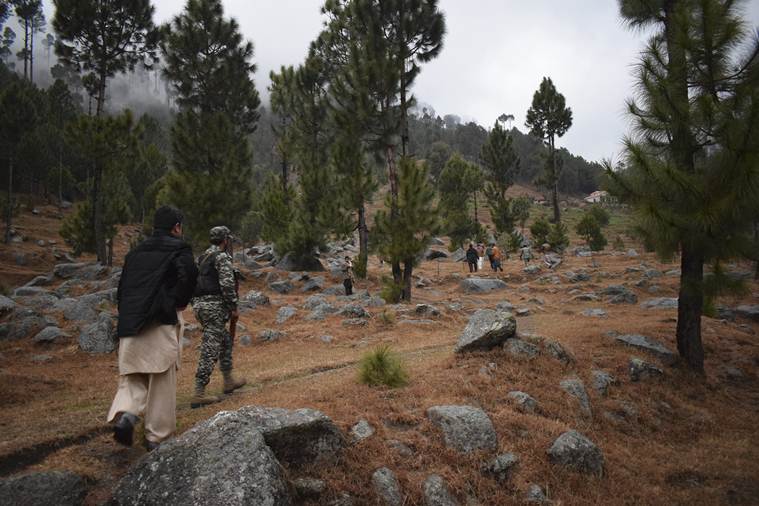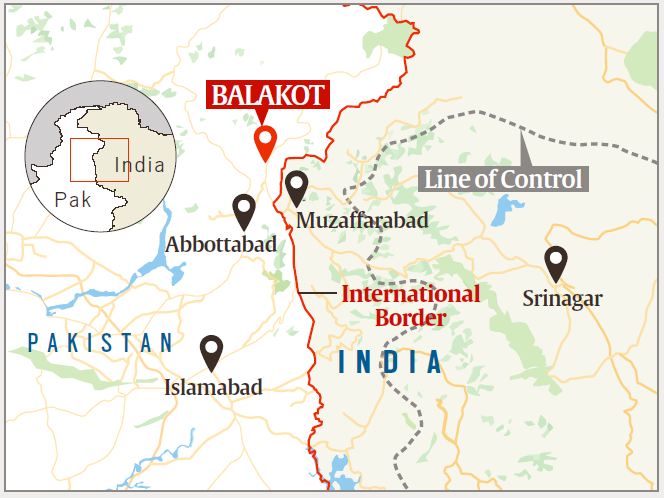
An Indian Air Force review of its February 26 air strike on Balakot in Pakistan has shown that its aircraft hit five of six designated mean point of impact (DMPI) on buildings in the Jaish-e-Mohammad terror training complex.
The detailed review, two sources conversant with it told The Indian Express, focuses on the strengths, weaknesses and lessons learnt from the air operation.
Watch: India confirms air strike on Jaish-e-Mohammad camp in Pakistan
While acknowledging there could be a better weapon to target-matching and a better feedback loop to win the propaganda war, the review has highlighted the positives in terms of maintaining surprise, security of operations, pilot proficiency and accuracy of the weapon used. It also has hitherto unpublished details of the operation based on extensive debriefing and assessment.
READ | Balakot: A 6-acre training camp for 600 terror recruits, run by Masood Azhar’s kin
According to sources, the operation had planned to use six Israeli Spice 2000 Penetrator type PGM (precision-guided munition) to hit the targets, and five of them had hit the designated mean point of impact (DMPI) on the buildings in the Balakot complex.

One PGM, sources said, did not leave the Mirage 2000 aircraft because it is a 35-year old legacy aircraft and there was drift in the inertial navigation system. It meant that there was a mismatch between the location seen by the PGM and the aircraft at the point of the delivery of the PGM, which led to it not being fired from the aircraft.
Read | In Gujarat, PM Modi invokes Balakot: US said India ready with 12 missiles
Moreover, the IAF had also carried the Crystal Maze AGM 142 munition along with the Spice 2000 to hit the target. The Crystal Maze PGM could not, however, be fired because of heavy cloud cover which did not allow pilots to have a line of sight over the target area.
Honest review is critical
The review highlights that full surprise was achieved through selection of target, means of operation and use of deception. It also looks at the weaknesses and lessons learnt from the operation because honest appraisals only add to its capabilities.
With its backward data linkage, Crystal Maze would have provided a video image of the target being hit which would have helped IAF quell doubts raised in the international media about the effectiveness of its air strike.
Also Read | Mirage, Awacs, Sukhoi, Popeye: How IAF took down Jaish training camp
“In hindsight, we achieved our aim, hitting five of the six DMPI. Only one was unused. But considering the nature of the propaganda war that needed to be won, we could have used a weapon which would have flattened the target and we could have also sent a platform that gets us clear images or video of the destruction,” sources said.
The IAF has Spice 2000 penetrator type PGM, and not Spice 2000 Mark 84, in its inventory which can be fired from a stand-off distance — in this case, from the Indian side of the Line of Control. One of the rules of engagement stipulated for the operation was not to cross the LoC, although some Mirage 2000 aircraft, which were trying to fire Crystal Maze, did cross over to the other side to get a better line of sight on the target.
Also read | US to India: Helping you on Masood Azhar, so end Iran oil imports
The review has highlighted the fact that full surprise was achieved by the IAF, through the selection of target, means of operation and use of deception. This happened after Pakistan Air Force (PAF) was on full air defence alert mode, as seen by 6-8 airfields from where aircraft were scrambled after Balakot was hit.
The target selected was in the middle of nowhere, providing surprise at an operational level, and the deception used was so effective that the closest PAF aircraft were 150 km away, near Bahawalpur, from the IAF fighters.
Moreover, the IAF has concluded that the security of the operation was of the highest order with no breach of communication networks despite the fact that more than 6,000 people were involved in one way or the other. But the actual target at Balakot was known to less than 10 persons in Air Headquarters.
The assessment has also shown that the accuracy of weapons used was better than stated — Spice 2000 PGM has a circular error of probability of 3 metre — with the targets being accurately hit despite multiple PGMs hitting the same target. This has given greater confidence to the IAF on the use of Spice 2000 PGM.
The review found pilot proficiency to be of the highest level, with commanding officers leading from the front. It is learnt that five of the pilots have been recommended for gallantry awards.